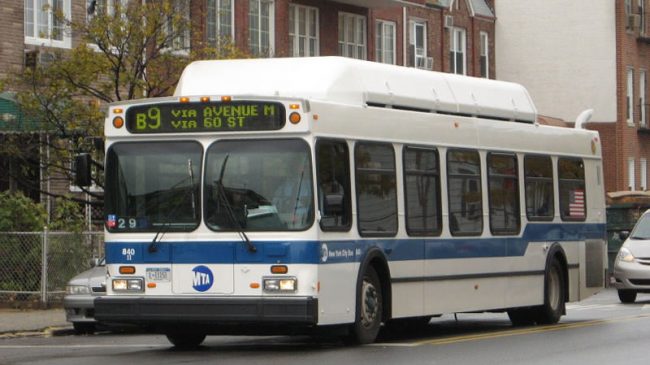Transit ridership on the Orange County Transportation Authority’s system has declined 30 percent over seven years. For years, transit boosters have been able to blame the recession and struggling economy. However, Orange County’s falling unemployment rate dropped to 4.1 percent in December. Despite the region’s improving job market, transit ridership fell by an additional 2.4 million passengers in 2015.
“I don’t know if this is long-term, but it doesn’t feel like it’s temporary when we’ve been dealing with 36 straight months of declining ridership,” Darrell Johnson, chief executive of the Orange County Transportation Authority, said recently.
Orange County isn’t the only area experiencing declining transit ridership. Bus ridership in San Bernardino declined 8 percent last year. Despite a $9 billion investment in rail lines, the Los Angeles County Metropolitan Transportation Authority has fewer total transit boardings today than it did 30 years ago, when the agency operated only buses.
Why is mass-transit ridership declining? A major problem is the type of transit being built and operated. In Los Angeles County, the transit agency has focused on building rail lines at the expense of buses. Los Angeles Metro is spending $12 billion over the next 10 years to build two new rail lines and three rail extensions. Yet while rail receives more money than buses do, buses still account for 75 percent of the system’s ridership.
Rail lines have also seduced Orange County. OCTA is proposing to build a streetcar using Measure M funds. The arguments for streetcars center on encouraging economic development in the surrounding areas, but aren’t effective mass transportation projects.
Southern California is never going to be subway-centric New York City. The culture of California developed around the car. Even with problematic traffic congestion, driving usually remains the quickest, easiest way to get around the region. While transit, sidewalks and bike lanes can be added to complement roads and highways, the car will remain dominant in Southern California. Mass transit can be a vital part of Orange County’s transportation network, but is has to he constructed and operated in the right way.
The most effective transit network for Orange County, as outlined in Reason Foundation’s recent Southern California Mobility Plan, would be a bus-based network that takes advantage of toll roads and express lanes to give customers fast trips that are cheaper than they can get in cars.
Slow travel times are the No. 1 reason commuters don’t take buses more often. Express bus service could operate for free on toll lanes. As a result, buses could go faster than most cars and provide reliable, fast travel times for users at a fraction of what it would cost them to use the toll lanes on their own. Potential bus lines include one on I-5 from Laguna Niguel to Santa Ana and a line on the 22 and the 57 from Yorba Linda to Westminster.
Bus rapid-transit service could operate on surface streets and take advantage of minor capital improvements like grade separations and operational improvements like priority traffic light synchronization, where the buses would quickly pass through intersections by receiving priority green traffic signals.
The bus system should also be redesigned to reflect today’s work and travel patterns and minimize transfers. A recent bus route redesign in Houston is on its way to increasing transit usage by 20 percent in two years.
Orange County and Southern California transportation agencies aren’t getting much bang for their transit bucks. Instead of focusing on streetcars and trains because they offer aesthetic appeal, it would be wise to remember mass transit is supposed to provide better access to the region and should help increase mobility and employment opportunities, especially for low-income residents.
Focusing on those goals, and relying on buses, would start turning the region’s struggling transit ridership numbers around.
Baruch Feigenbaum is assistant director of transportation policy at Reason Foundation. This article originally appeared in The Orange County Register.

